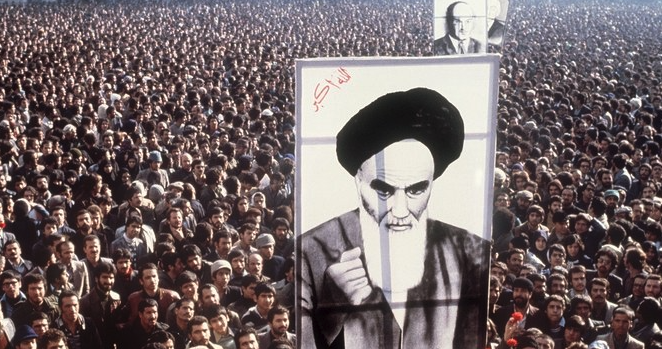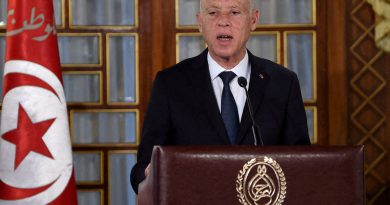The Iranian revolution at 44: Between Early Successes and Late Failures
The Iranians want the leadership to stop wasting the country’s resources on extraterritorial follies and allocate these vast resources to the Iranian people, who have long been denied a dignified living.
The 1979 Islamic revolution in Iran was a watershed moment in the country’s modern political history. It signaled the end of monarchy and the beginning of republicanism in its Islamic version. The revolution was led by Ayatollah Khomeini, a jurist who established Velayat-e Faqih theory. It had both successes and failures. The successes came early and were fleeting, while the failures came later and continue to this day. Yet, the successes only benefited the clerical revolutionary elite, but the failures have caused harm to all people.
The first success is the revolution’s own success. On January 16, 1979, Iran’s Shah Mohammad Reza Pahlavi fled the country. Three months later, Iranians decisively voted in favor of creating an Islamic republic in a referendum. After creating the Islamic state he had long desired and for which he had laid out doctrines and written books, Khomeini launched a drive to purge opponents, which he was remarkably successful in.
Abolhassan Bani-Sadr, a leftist president who was always at conflict with the clerical leadership, was the first president of the newly founded Islamic regime. Khomeini didn’t tolerate his opposition. Accordingly, Bani Sadr fled the country in 1981, only two years after the revolution’s victory.
Aside from Bani Sadr, thousands of dissenters were executed as part of Khomeini’s dissident persecution. The Iranian religious government developed a ‘death committee’, which oversaw the mass execution of thousands of dissidents. The government not only murdered dissidents, but it also closed down newspapers and abolished unions. Non-Islamists were the first to be swept out in the purge, which marked the beginning of Islamist success in consolidating power.
The regime’s ideology was also a triumph. Velayat-e-Faqih was an ideological cornerstone upon which the Iranian system was founded from the beginning.
The Shiite Islamic concept of Velayat-e-Faqih has historically been used to justify limited clerical guardianship over a specific sector of the population: widows, orphans, and the disabled. Its current form is a relatively recent interpretation of the ideology produced in the early 1970s by the revolutionary Iranian cleric Ayatollah Ruhollah Khomeini.
This theory is a success per se. It is the first theory in Shiite law to break with the quietist Shiite tradition that avoids political involvement. The theory has been present as the ideological governor of the political system throughout the revolution’s four decades. It was solidified within domestic state institutions and disseminated beyond borders.
Despite these victories, primarily political and ideological, the Islamic revolution entered an era of failure, beginning with a single early but humiliating military defeat to Iraq during the eight-year war between the two neighbors in the 1980s. Iran was defeated in the war, and Khomeini was forced to drink the poisoned chalice.
This external failure has prompted further failures, including internal political and economic failures. These failings have degraded the country’s economic capacities and pulverized the political landscape under one-man, quasi-divine rule.
After the war, Iran attempted to mend fences with the outside world, allowing more moderate’ reformists to ascend to power, including Hashemi Rafsanjani and Mohammad Khatami. All of these attempts, however, have been futile because the regime split labor, with the military and intelligence institutions having the upper hand at both home and overseas. The democratic, moderate, and gestures aimed to placate the West were ineffective, resulting in a diplomatic failure.
This diplomatic failure has endured, with the country facing crushing sanctions on its economy as a result of its contentious nuclear program, ballistic missile program, and regional and global backing for terror networks.
The regime’s most recent failure has been economic in nature. Iran is a wealthy country with vast oil and gas reserves, the most of which are concentrated in the Arab region of Ahwaz. However, the Iranian people are impoverished. The reason is simple: the Iranian regime is funneling most of the country’s resources and earnings to its proxy actors abroad, including Hezbollah in Lebanon, Iraqi militias, the Houthis in Yemen, and Hamas in Palestine. The clerical regime is generous abroad but stingy at home. There are no adequate or sufficient expenditures in Iran’s budget for the long-suffering Iranian people, but people’s money is lavished on primarily non-Iranian fighters operating beyond boundaries to spread the regime’s ideology and achieve its expansionist ambitions.
It is a failure to prioritize the needs of the people. And the consequences of this failure have been catastrophic. Poverty is widespread throughout Iran. The currency has been falling to record lows. The majority of Iranians are unable to make ends meet. Iranians have staged repeated protests after sanctions were imposed, namely in 2017, 2018, 2019, and 2022. The protesters’ demands are politico-economic. The Iranians want the leadership to stop wasting the country’s resources on extraterritorial follies and allocate these vast resources to the Iranian people, who have long been denied a dignified living.
Even after establishing the morality police, Iran was unable to sustain the apparatus, which was engaged in the killing of the Kurdish girl Mahsa Amini, the episode that signaled the end of the religious machinery. In this regard, the regime has failed to defend its vision for enforcing the Islamic dress code and public morals, for which it has established morality police.
To sum up, the Iranian revolution had made successes at the organizational, ideological and political levels. But it has failed to sustain these successes, with failures prevailing throughout the revolution’s course, which is a stone’s throw from downfall. The regime was successful in consolidating control and suppressing opposition both at home and abroad. However, it has failed miserably to strengthen the economy or establish a democratic political process. The regime was able to entrench its ideology by intimidation and indoctrination. Nonetheless, it has failed to persuade large segments of the population to embrace it willingly. The first anniversary of Iran’s revolution was marked by success. But on the 44th, failure reigns supreme. And if events continue on this course, the regime will collapse wholly and entirely in the end, with the people finally gaining their long-awaited triumph.
Mostapha Hassan Abdelwahab is the former editorial manager of the English edition of the Baghdad Post. He is focusing on Iraq, Iran and political Islam movements, with articles posted on the Herald Report, Vocal Europe, the Greater Middle East and other platforms.
Disclaimer: Views expressed by writers in this section are their own and do not reflect Milli Chronicle’s point-of-view.



